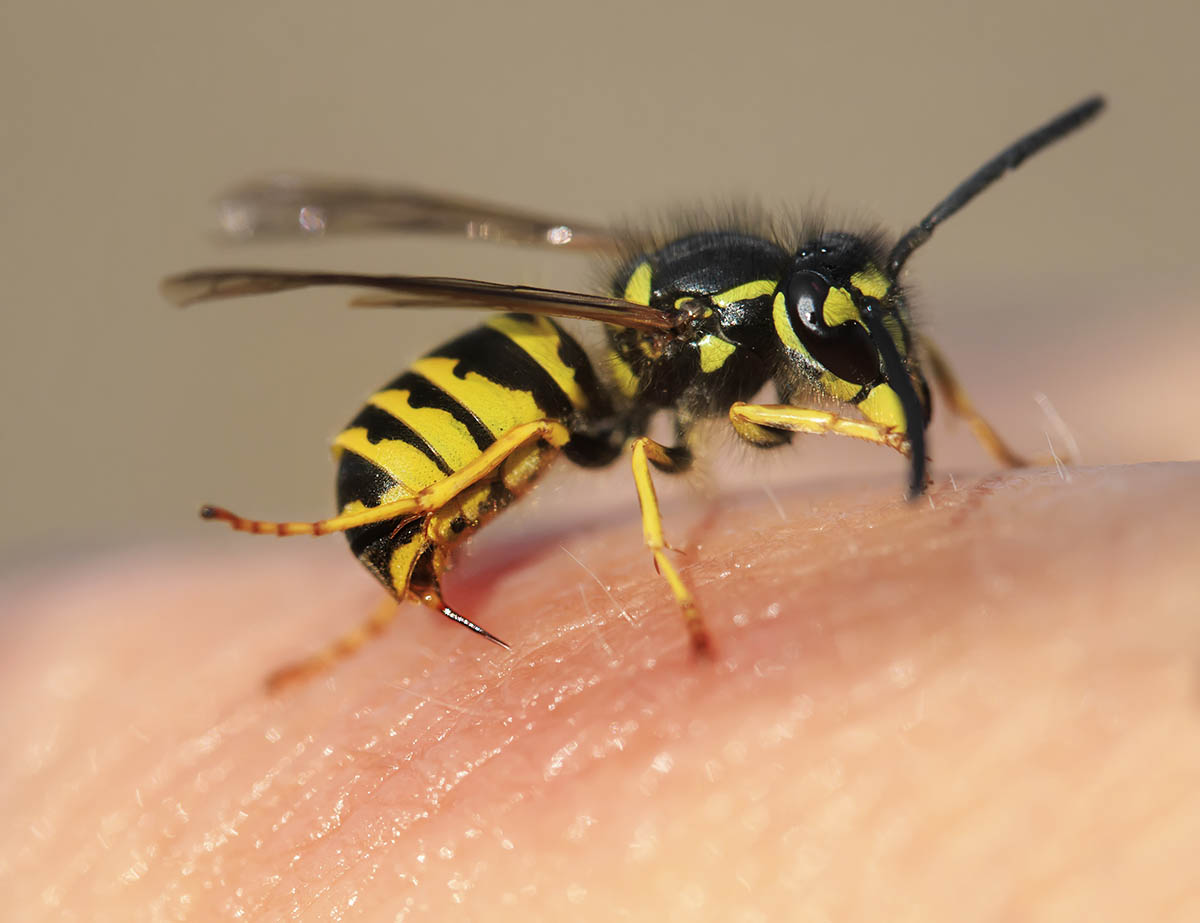Bee Sting Avoidance
While not a year-round problem in Idaho, bees can be quite present during the Spring, Summer, and Fall months. During these months as they are migrating between nests and pollinating – and doing other “bee things”, some encounters with humans might result in a sting. Not all stings result in a life-threatening situation, but are certainly not comfortable and worth avoiding.
Here are some tips regarding avoiding stings and what to do if you happen to be stung.

Avoiding the Sting
Wear light-colored clothing
Do not leave food, drinks, or garbage out and uncovered
Avoid wearing cologne or perfume, especially floral scents
When opening equipment, be alert to bees coming in and out of cracks and holes, and listen for the hum of an active bee colony
Check your vehicle for bees before you begin driving
Check vehicles that have been sitting for a length of time for signs of bee infestation
Avoid crushing bees and wasps; many species release a type of pheromone when crushed or killed that can be detected by other members of their hive a significant distance away. Smashing a few bees instead of shooing them away might not seem like a big deal, but when the entire hive shows up a few minutes later, you might regret your decision.
If You Get Stung
Warn others of the hazard.
Pay close attention to the area or areas where you got stung.
Remove the stinger as soon as possible.
Remove the stinger in a sideways motion with tweezers or a credit card.
Notify your supervisor (if on the job) once you are safe and have removed the stinger.
Use an over-the-counter pain reliever such as ibuprofen or acetaminophen.
Thoroughly wash the sting site with soap and water.
Use Sting-Kill swabs or wipes to help stop the pain.
Use ice packs to minimize swelling.
What Not to Do
Do not let the stingers remain in the skin – venom can continue pumping into the body for up to 10 minutes.
Do not squeeze or pinch stingers when removing them. That will inject more venom into the body.
Do not cut the skin, try to suck out venom, or use a meat tenderizer on the wound. Cutting the skin may lead to infection.
Allergic Reactions
Everybody reacts to stings in some way. Most swell around the stung area. That’s not the same as a systemic allergy.
About 2 million Americans have allergies to stinging insect venom. Many of these individuals are at risk for life-threatening allergic reactions. Approximately 50 U.S. deaths each year are attributed to insect sting allergies.
Symptoms of a systemic allergy may include widespread swelling, painful joints, hives, rapid pulse, dizziness, difficulty breathing, and loss of consiousness.
Seek medical attention if a person shows signs of a systemic allergy or if swelling extends beyond two joints, such as if you’re stung on the finger and swelling extends past the wrist and elbow.
If you are allergic, always carry an adrenaline kit – such as an EpiPen – and make sure others around you are aware and know how to use it.
If you need to go somewhere to be seen, have someone else drive.
Although severe allergic reactions are not that common, some can lead to shock, cardiac arrest, or unconsciousness in 10 minutes or less. Such a reaction could be fatal. Get emergency treatment as soon as possible.
By following these basic principles, you can ensure your summer will be a safe one. If you’re aware of nests on your property, wasp or hornet sprays could also help reduce your risk of being stung. If infestations prove to be far to progressed for basic treatment options, you should consult an exterminator.